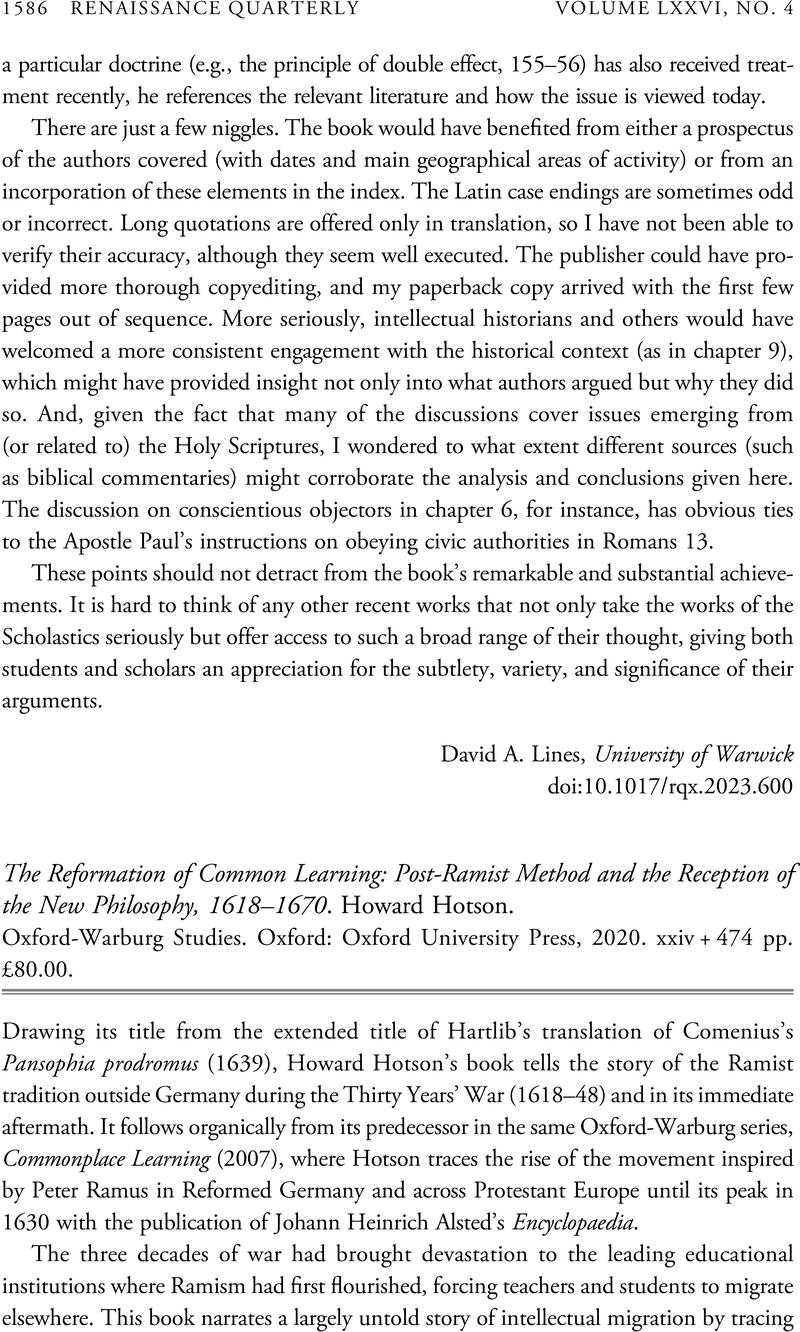No CrossRef data available.
Article contents
The Reformation of Common Learning: Post-Ramist Method and the Reception of the New Philosophy, 1618–1670. Howard Hotson. Oxford-Warburg Studies. Oxford: Oxford University Press, 2020. xxiv + 474 pp. £80.00.
Review products
The Reformation of Common Learning: Post-Ramist Method and the Reception of the New Philosophy, 1618–1670. Howard Hotson. Oxford-Warburg Studies. Oxford: Oxford University Press, 2020. xxiv + 474 pp. £80.00.
Published online by Cambridge University Press: 24 January 2024
Abstract
An abstract is not available for this content so a preview has been provided. Please use the Get access link above for information on how to access this content.

- Type
- Review
- Information
- Copyright
- Copyright © The Author(s), 2024. Published by Cambridge University Press on behalf of the Renaissance Society of America



